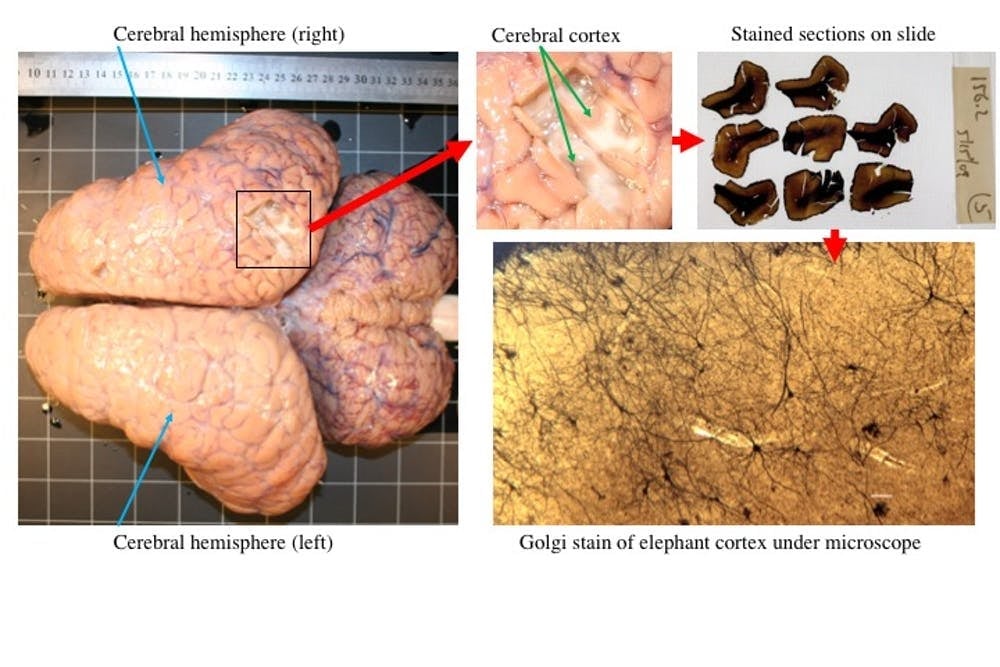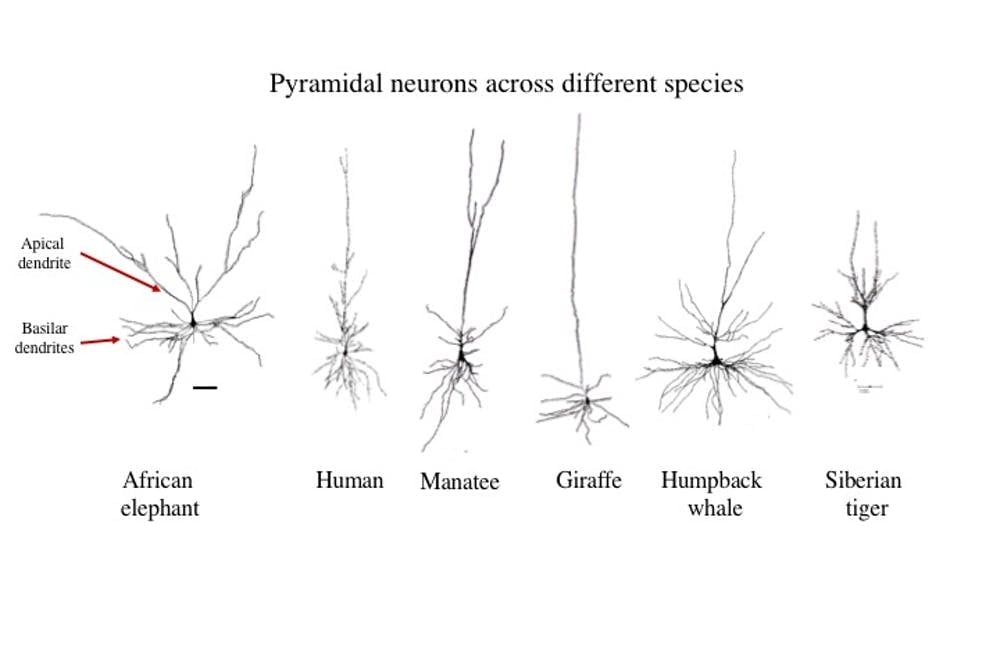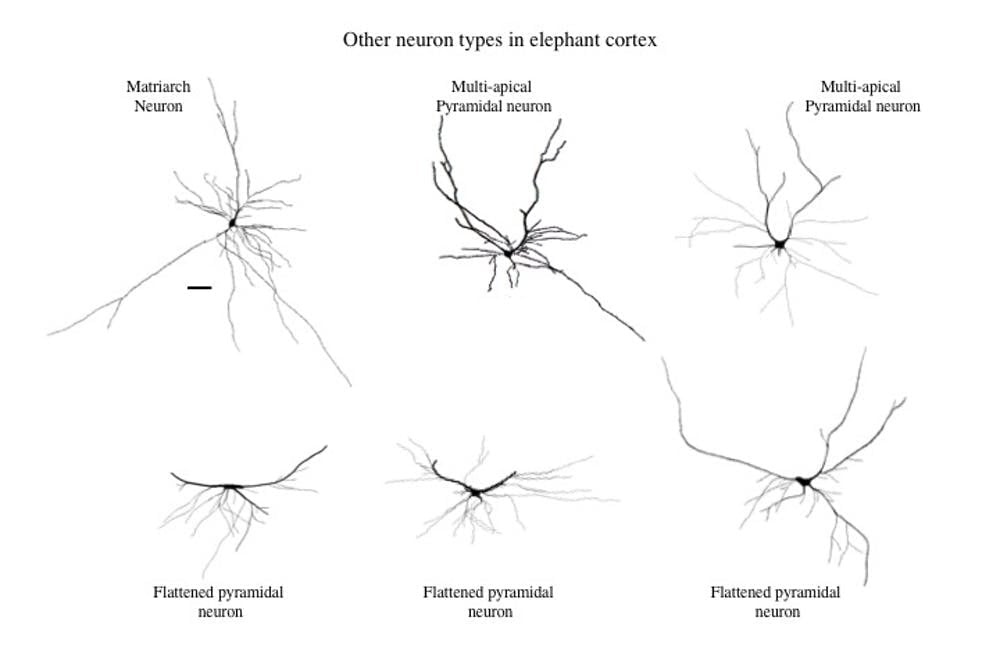Elephant brains prove how amazing—and unique—these animals really are
Conservationists have designated August 12 as World Elephant Day to raise awareness about conserving these majestic animals. Elephants have many engaging features, from their incredibly dexterous trunks to their memory abilities and complex social lives.


Conservationists have designated August 12 as World Elephant Day to raise awareness about conserving these majestic animals. Elephants have many engaging features, from their incredibly dexterous trunks to their memory abilities and complex social lives.
But there is much less discussion of their brains, even though it stands to reason that such a large animal has a pretty big brain (about 12 pounds). Indeed, until recently very little was actually known about the elephant brain, in part because obtaining well-preserved tissue suitable for microscopic study is extremely difficult.
That door was opened by the pioneering efforts of neurobiologist Paul Manger at the University of the Witwatersrand in South Africa, who obtained permission in 2009 to extract and preserve the brains of three African elephants that were scheduled to be culled as part of a larger population management strategy. We have thus learned more about the elephant brain in the last 10 years than ever before.
The research shared here was conducted at Colorado College in 2009-2011 in cooperation with Paul Manger, Columbia University anthropologist Chet Sherwood and neuroscientist Patrick Hof of the Icahn School of Medicine at Mount Sinai. Our goal was to explore the shapes and size of neurons in the elephant cortex.
My lab group has long been interested in the morphology, or shape, of neurons in the cerebral cortex of mammals. The cortex constitutes the thin, outer layer of neurons (nerve cells) that cover the two cerebral hemispheres. It is closely associated with higher cognitive functions such as coordinated voluntary movement, integration of sensory information, sociocultural learning and the storing of memories that define an individual.

The arrangement and morphology of neurons in the cortex is relatively uniform across mammals—or so we thought after decades of investigations on human and nonhuman primate brains, and the brains of rodents and cats. As we found when we were able to analyze elephant brains, the morphology of elephant cortical neurons is radically different from anything we had ever observed before.
How neurons are visualized and quantified
The process of exploring neuronal morphology begins with staining brain tissue after it has been fixed (chemically preserved) for a period of time. In our laboratory we use a technique over 125 years old called the Golgi stain, named after Italian biologist and Nobel Laureate Camillo Golgi (1843-1926).
This methodology set the foundation of modern neuroscience. For example, Spanish neuroanatomist and Nobel Laureate Santiago Ramon y Cajal (1852-1934) used this technique to provide a road map of what neurons look like and how they are connected with each other.
The Golgi stain impregnates only a small percentage of neurons, allowing individual cells to appear relatively isolated with a clear background. This reveals the dendrites, or branches, that constitute the receptive surface area of these neurons. Just as branches on a tree bring in light for photosynthesis, the dendrites of neurons allow the cell to receive and synthesize incoming information from other cells. The greater the complexity of the dendritic systems, the more information a particular neuron can process.
Once we stain neurons, we can trace them in three dimensions under the microscope, with the help of a computer and specialized software, revealing the complex geometry of neuronal networks. In this study, we traced 75 elephant neurons. Each tracing took one to five hours, depending on the complexity of the cell.
What elephant neurons look like
Even after doing this kind of research for years, it remains exciting to look at tissue under the microscope for the first time. Each stain is a walk through a different neural forest. When we examined sections of elephant tissue, it was clear that the basic architecture of the elephant cortex was different from that of any other mammals that have been examined to date—including its closest living relatives, the manatee and the rock hyrax.

Here are three major differences that we found between cortical neurons in the elephant and those found in other mammals.
First, the dominant cortical neuron in mammals is the pyramidal neuron. These are also prominent in the elephant cortex, but they have a very different structure. Instead of having a singular dendrite that comes off the apex of the cell (known as an apical dendrite), apical dendrites in the elephant typically branch widely as they ascend to the surface of the brain. Instead of a single, long branch like a fir tree, the elephant apical dendrite resembles two human arms reaching upward.

Second, the elephant exhibits a much wider variety of cortical neurons than do other species. Some of these, such as the flattened pyramidal neuron, are not found in other mammals. One characteristic of these neurons is that their dendrites extend laterally from the cell body over long distances. In other words, like the apical dendrites of pyramidal cells, these dendrites also extend out like human arms uplifted to the sky.
Third, the overall length of pyramidal neuron dendrites in elephants is about the same as in humans. However, they are arranged differently. Human pyramidal neurons tend to have a large number of shorter branches, whereas the elephant has a smaller number of much longer branches. Whereas primate pyramidal neurons seem to be designed for sampling very precise input, the dendritic configuration in elephants suggests that their dendrites sample a very broad array of input from multiple sources.
Taken together, these morphological characteristics suggest that neurons in the elephant cortex may synthesize a wider variety of input than the cortical neurons in other mammals.
In terms of cognition, my colleagues and I believe that the integrative cortical circuitry in the elephant supports the idea that they are essentially contemplative animals. Primate brains, by comparison, seem specialized for rapid decision-making and quick reactions to environmental stimuli.
Observations of elephants in their natural habitat by researchers such as Dr. Joyce Poole suggest that elephants are indeed thoughtful, curious and ponderous creatures. Their large brains, with such a diverse collection of interconnected, complex neurons, appear to provide the neural foundation of the elephant’s sophisticated cognitive abilities, including social communication, tool construction and use, creative problem-solving, empathy and self-recognition, including theory of mind.
The brains of all species are unique. Indeed, even the brains of individuals within a given species are unique. However, the special morphology of elephant cortical neurons reminds us that there is certainly more than one way to wire an intelligent brain.
This article was originally published on The Conversation. Read the original article.